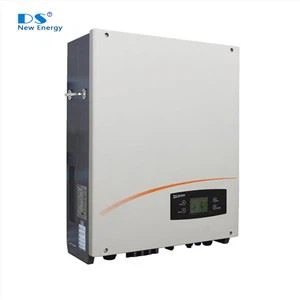
Abstract: Lithium-ion batteries are widely used in various applications, from consumer electronics to electric vehicles and energy storage systems. However, users may occasionally encounter situations where the State of Charge (SOC) fails to reach the expected 90% threshold or experiences overcharging phenomena. This document provides a detailed analysis of potential causes and comprehensive solutions for these issues.
Common Scenarios During Battery Operation
During normal operation, lithium battery systems may exhibit certain abnormal behaviors that require attention. situation involves voltage and SOC inconsistencies:
• SOC Display Anomalies: The battery management system (BMS) may show the SOC reaching only 80%-90% when in fact the battery is nearing full capacity
• Voltage Fluctuations: The SOC may unexpectedly jump from a low value to 99% or 100%, while the voltage drops from a high value to a low value
• Data Disturbances: The monitoring system may display inconsistent or erratic readings during these transitions
• These symptoms often indicate underlying issues with the battery management system or monitoring platform that require investigation and correction.
Root Cause Analysis
Several technical factors can contribute to SOC miscalculations and overcharging scenarios:
1.Communication Platform Display Errors
The cloud-based monitoring platform may contain software bugs that misinterpret or incorrectly display battery parameters. These display errors can lead to:
• Misrepresentation of actual SOC values
• False overvoltage alarms
• Incorrect historical data logging
• Visual discrepancies between actual and displayed values
2.Improperly Configured BMS Protection Parameters
The battery management system's protective settings play a crucial role in maintaining safe operation. Common configuration issues include:
• Overvoltage protection thresholds set too low
• Inadequate voltage differential allowances between cells
• Improperly calibrated SOC calculation algorithms
• Insensitive response to actual battery conditions
3.Battery String Voltage Imbalance
Significant voltage differences between battery strings can trigger false alarms and affect SOC calculations. This imbalance may result from:
• Uneven aging of battery cells
• Temperature variations across the battery pack
• Manufacturing tolerances in cell characteristics
• Unequal charge/discharge cycles among cells
4.Data Transmission and Processing Issues
The communication between BMS and monitoring systems can introduce errors through:
• Signal interference in data transmission
• Packet loss during wireless communication
• Processing delays in cloud platforms
• Synchronization problems between devices
Comprehensive Solutions
To address these issues effectively, implement the following solutions in sequence:
1.Cloud Platform Reset Procedure
• Complete Shutdown: Power down the communication and monitoring cloud platform completely
• Waiting Period: Maintain the shutdown for 5-10 minutes to ensure all temporary data and cache are cleared
• Restart Sequence: Power up the system in the correct order (hardware first, then software)
• Verification: Confirm all systems are communicating properly before resuming normal operation
2.BMS Parameter Optimization
• Adjust the battery management system parameters to more appropriate values:
• Voltage Thresholds: Increase overvoltage protection limits to appropriate levels based on battery specifications
• SOC Calibration: Reset and recalibrate the SOC calculation algorithm
• Balance Parameters: Adjust cell balancing thresholds to accommodate normal voltage variations
• Protection Delays: Implement appropriate time delays to prevent false triggering of protection mechanisms
3.System Restart Protocol
• Save Settings: Ensure all new parameters are properly saved in the BMS
• Full Restart: Perform a complete system restart, including all connected devices
• Initialization: Allow the system to complete its startup sequence and self-tests
• Verification: Monitor initial operation to confirm proper functionality
Preventive Measures
To minimize recurrence of these issues, implement these long-term strategies:
1.Regular System Maintenance
• Schedule monthly checks of all communication links
• Verify data consistency between BMS and monitoring platforms
• Clean and inspect all physical connections
2.Firmware Updates
• Regularly update BMS firmware to the latest stable version
• Patch monitoring platform software as updates become available
• Maintain compatibility between all system components
3.Enhanced Monitoring
• Implement redundant monitoring systems for critical parameters
• Set up automated alerts for abnormal conditions
• Maintain detailed operation logs for trend analysis
4.Staff Training
• Educate operators on proper system shutdown and restart procedures
• Train maintenance personnel in parameter adjustment techniques
• Develop troubleshooting guides for common issues
Actual Case
Here is the data when the problem occurs


SOC Display Anomalies: The battery management system (BMS) shows the SOC reaching only 84% when in fact the battery is nearing full capacity
Voltage Fluctuations: Between 11:29 and 11:35, the SOC jumps unexpectedly from 84% to 99% while the voltage decreases from 55.78V to 53.83V
Steps to solve the problem
- Cloud Platform Reset
- BMS Parameter Optimization
- System Restart Protocol
The following data is obtained after solving the problem


- SOC display normal: The battery management system (BMS) shows that the SOC can reach 100% without any other issues
- Voltage normal: Between 8:24 and 12:55, SOC goes from 69% to 100%, voltage goes from 53.25 to 56.01V, no alarm state, everything is normal

















